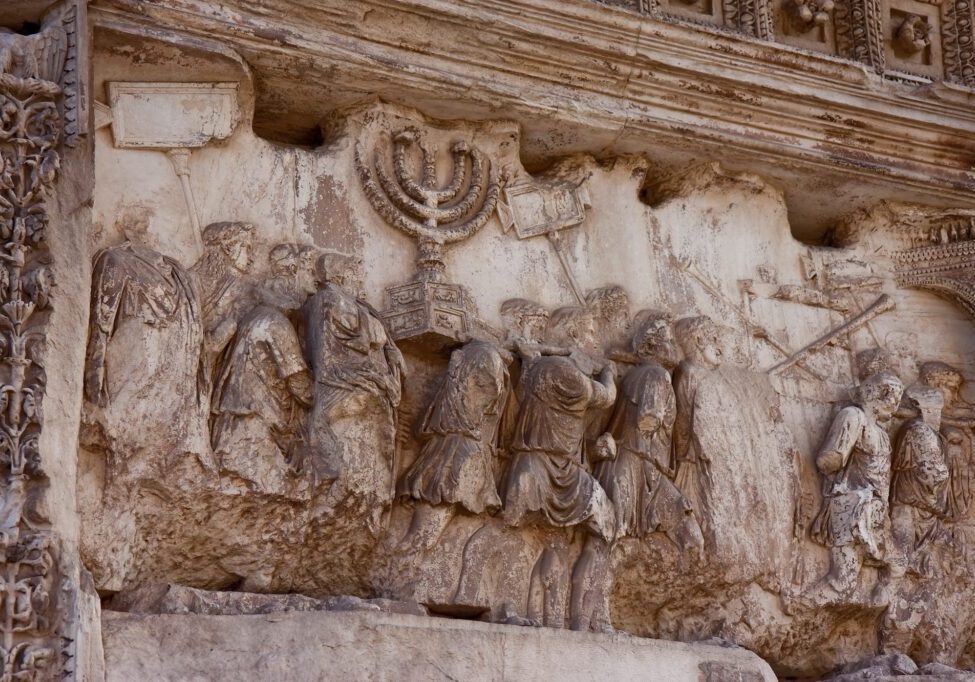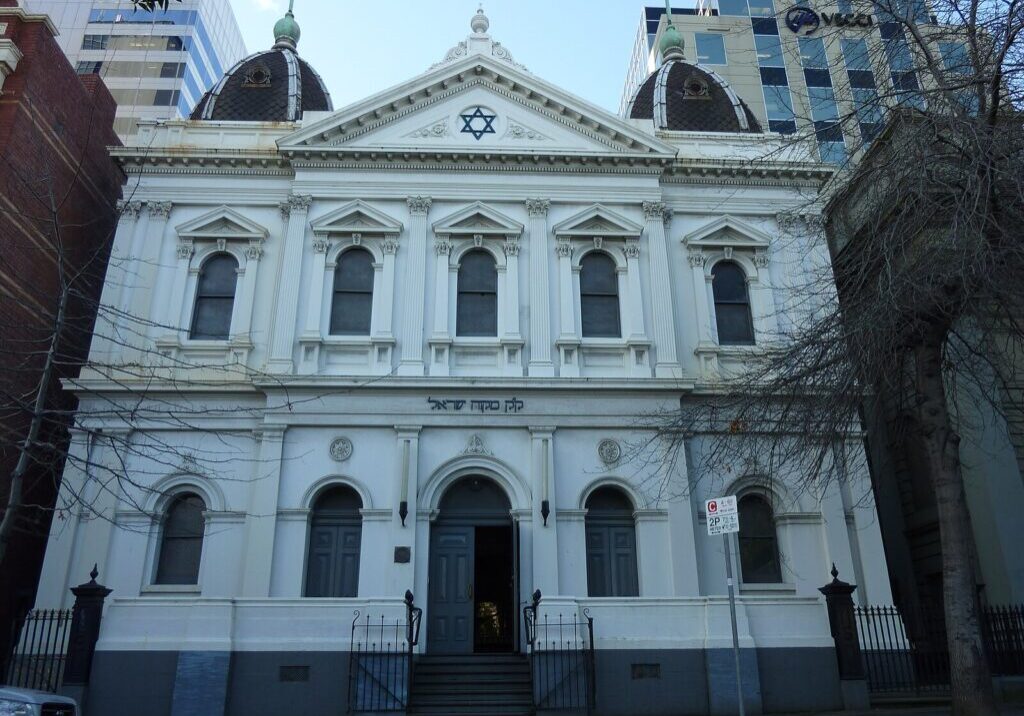Australia/Israel Review
Philadelphi Story
Sep 24, 2024 | Louis Keene

How a tiny strip of land has become so controversial
This story was originally published on the Forward.
Click here to get the Forward’s free email newsletters delivered to your inbox.
The future of the Philadelphi corridor – a 13-kilometre strip of land along Gaza’s border with Egypt – has emerged as a sticking point in Israel’s ceasefire negotiations with Hamas. Israeli Prime Minister Binyamin Netanyahu has insisted that Israel maintaining control over the corridor is central to its national security. But Hamas has made clear that any deal to release the hostages is conditioned on full Israeli withdrawal from Gaza – which includes Philadelphi.
In the meantime, outrage over the discovery in late August that Hamas had executed six Israeli hostages nearly 11 months after their abduction led to the largest protests against Netanyahu since October 7, and to open dissent within his war cabinet. The mother of Almog Sarusi, one of the six hostages, said at his funeral that he had been “sacrificed on the altar” of the Philadelphi Corridor.
Until a few months ago, that corridor was Gaza’s only bridge to the outside world not under Israeli control. Here is its backstory.
How Philadelphi came to be
Only a few hundred metres wide and barren of construction beyond fences on either side, the corridor was established when Israel disengaged from the Gaza Strip in 2005, withdrawing both soldiers and settlers who had occupied the area since the 1967 war. Under an addendum to the Camp David accords – the 1978 peace treaty between Israel and Egypt – known as the Philadelphi Protocol, it was to serve as a buffer between Gaza and Egypt.
The name “Philadelphi” was what the road along the border was called on Israeli military code maps. This road leads to the Rafah Crossing, which is controlled by Egypt – Gaza’s only entry or exit point not controlled by Israel.
The Philadelphi Protocol stipulated that Egypt would deploy hundreds of border patrol officers along the corridor to prevent smuggling. The Palestinian Authority would control it from the Gaza side.
But Israel soon started finding tunnels under the corridor. In 2006, the Israel Defence Forces demolished 13 tunnels it said had been used to smuggle weapons into Gaza. The problem worsened after Hamas ousted its rival Fatah faction from Gaza in a bloody coup in 2007, wresting control of the strip from the PA.
In 2014, after a pair of terror attacks in the Sinai Desert near Gaza, the Egyptian government demolished hundreds of houses to widen the corridor to 500 metres, as it was rumoured that the terrorists may have used the smuggling tunnels to enter the country or transport explosives.
The IDF took control of the corridor this past May, and shortly afterward announced that it had discovered 50 tunnels underneath it connecting Gaza to Egypt.
Why Netanyahu won’t give up Philadelphi
Netanyahu has said that these tunnels made the October 7 attack possible.
“It became a huge terrorist base because we left that corridor,” he said at a news conference.
In May – seven months into the war – IDF forces surged into the corridor, defying Egyptian officials who said the action violated their sovereignty. Israeli troops have remained there since, and Netanyahu calls their ongoing presence there a “red line” in ceasefire negotiations.
He said in late August that proposals to leave Philadelphi temporarily would enable Hamas to smuggle the remaining hostages out of Gaza and into Sinai or Iran. The international community would never support Israel retaking the corridor down the road, he argued, inevitably creating the same conditions that led to October 7.
What Netanyahu’s critics are saying
With ceasefire negotiations dragging on for months, Defence Minister Yoav Gallant and a slew of unnamed Israeli officials have slammed Netanyahu for his obstruction, saying he was overstating Philadelphi’s significance. And as large swaths of the Israeli public took to the streets to protest, Netanyahu’s fixation on Philadelphi has become the centre of their fury.
Some have pointed to the Israeli military’s seeming de-prioritisation of Philadelphi during the war’s early stages as evidence that the corridor is not as critical as Netanyahu says. (Others maintain it should have been pursued sooner.)
Gallant called Netanyahu’s prioritisation of Philadelphi over the hostages “a moral disgrace”, according to Israeli news outlets. Former IDF Chief of Staff Benny Gantz, who quit Netanyahu’s war cabinet in June, has said the corridor is important but should be abandoned until the remaining hostages – an estimated 60 of whom are believed to be alive – are returned.
The rest of Netanyahu’s security cabinet has backed the Prime Minister.
Why don’t the Palestinians and Egypt want Israel in the corridor?
Hamas is not alone in rejecting Israeli control of the corridor. Egypt, which along with the United States and Qatar is key in brokering any agreement, also wants the IDF out.
Palestinians and their allies see any ongoing Israeli presence in the corridor as a military occupation of Gaza in violation of international law. It would also shut off their only border not controlled by Israel. And it would threaten the tunnels, which are not only used for weapons, but also food and other goods.
“Without withdrawing from the Philadelphi corridor, there will be no agreement,” Khalil al-Hayya, Hamas’ lead negotiator, said in an interview with Al Jazeera on Sept. 2.
Egypt sees Israel’s presence there as a violation of the Philadelphi Protocol – and thus, the Camp David Accords – and it maintains that it is managing the border effectively. It has rejected Israel’s proposal for putting eight guard towers along the corridor.
It’s perhaps no surprise that the broader Arab world has taken their side. But it seems the US Biden Administration has as well.
While Biden said on Sept. 2 that Netanyahu is not doing enough to end the war, the President has not addressed Philadelphi directly. On Sept. 4, an unnamed White House official did so, characterising Netanyahu’s hardline stance on it as disruptive.
“We have taken account of Israel’s security concerns in this negotiation,” the official said, “and if anything, not getting into this deal is more of a threat to Israel’s long-term security than actually concluding the deal and that includes the issue of the Philadelphi corridor.”
Are there any other options for resolution?
Recent reports from the negotiating table are that Netanyahu has appeared open to the idea of withdrawing troops from the corridor in a second phase of a ceasefire deal.
The US has also proposed putting international forces there for six months, with US and the Palestinian Authority – but not Hamas – posted at the Rafah crossing. But the White House official who spoke anonymously on Sept. 2 said that an “alternative security force” wouldn’t be necessary for securing the Philadelphi Corridor.
And he noted that Netanyahu’s corridor demand has hardly been the only obstacle to a deal. Hamas, the official said, has made the negotiations “a pretty frustrating process.”
“What Hamas has been demanding here,” they said, “the Israelis have come forward to meet the terms as best they can.”
Louis Keene is a reporter for the Forward. Keene has also been published in The New York Times, New York Magazine and VICE. He won the Simon Rockower Award from the American Jewish Press Association for feature writing in 2022, in addition to awards from the LA Press Club and the San Diego Press Club. He is based in Los Angeles and can be followed on Twitter @thislouis.
Tags: Egypt, Gaza, Hamas, Israel, Palestinians






